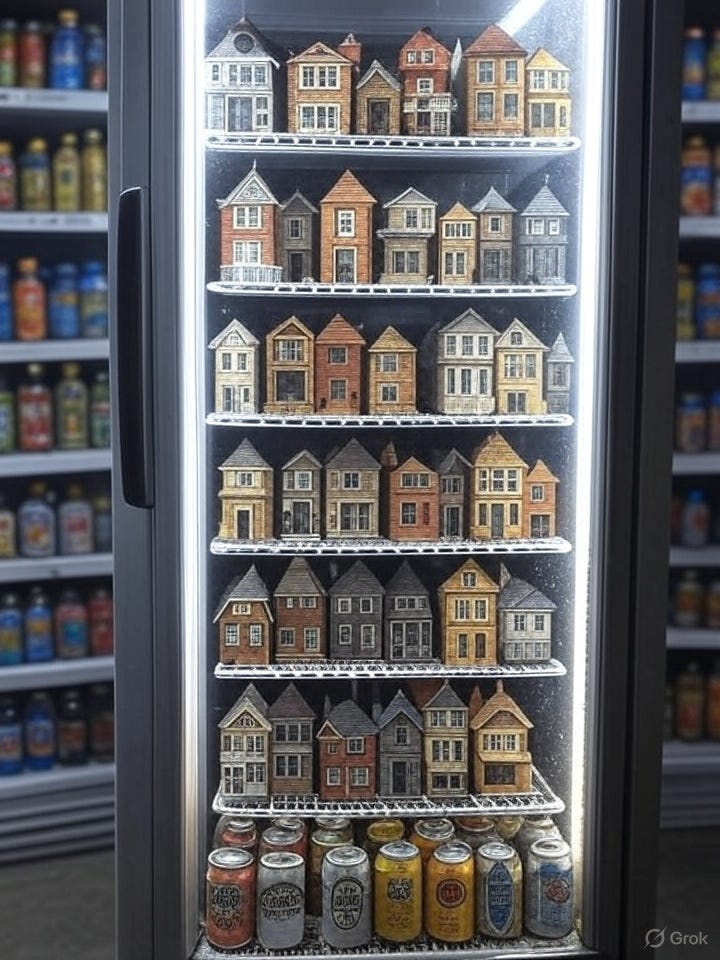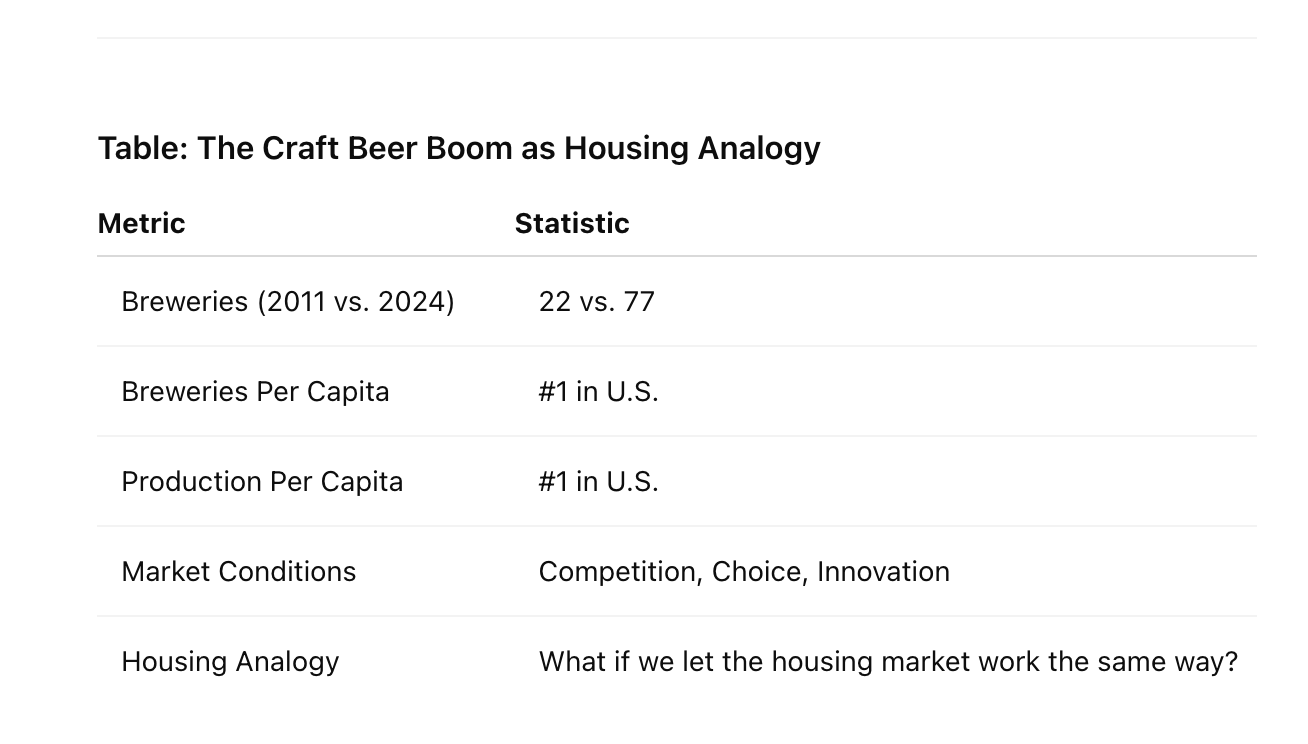How Vermont’s Craft Brew Industry Could Solve the Housing Crisis
Vermont's housing shortage is not fate. It's a policy choice. For decades, the state chose underproduction and overregulation. But the solution is right in front of us.
Imagine if Vermont law only allowed two massive breweries to exist, both churning out the same generic light lager. Now imagine the state tried to address the public's dissatisfaction by using tax dollars to subsidize more of that same beer—just enough to slightly ease the shortage. It sounds absurd. But in many ways, this mirrors how Vermont approaches housing.
Now look at what actually happened in the world of Vermont beer. In 2011, there were just 22 breweries. By 2024, that number had skyrocketed to 77, earning Vermont the top spot in the nation for both breweries and beer production per capita. What caused this explosion in supply, variety, and economic vitality? A regulatory environment that invited competition and innovation.
The Craft Beer Parable
With few regulatory obstacles, small brewers emerged across the state. The result? Intense competition, incredible diversity of styles and price points, and widespread access. Today, Vermonters can walk into a store and choose from pilsners, IPAs, sours, stouts, and more—ranging from affordable $12 four-packs to limited-release, barrel-aged showstoppers. This isn't just about taste. It's about access, innovation, and economic growth: the craft beer industry now pumps $460 million into Vermont's economy each year and supports thousands of local jobs.
This success story is more than a feel-good tale for beer lovers. It's a blueprint for abundance. And it's exactly the model Vermont needs to address its deepening housing crisis.
Brewing Up Housing Abundance
Vermont's housing policies today are narrowly focused on subsidizing a small number of "affordable" units. This is like responding to a beer shortage by funding more light lager. Instead, Vermont needs to embrace the housing equivalent of the entire beer aisle: diverse options for a range of budgets and lifestyles.
That means:
Starter homes for young families (the pilsners)
Duplexes and townhouses for middle-income buyers (the IPAs)
Apartments and accessory dwelling units for seniors and single residents (the porters and sours)
To get there, Vermont needs to unleash its housing market with the same entrepreneurial spirit it gave to beer.
A Dual-Track Strategy for Housing Reform
The debate between "affordable" versus "market-rate" housing is a false choice. Vermont must do both. Here's how:
1. Unleash Market-Rate and Missing Middle Supply
Modernize Act 250: Streamline permitting for housing within designated growth areas to avoid costly, time-killing delays.
Fix Local Zoning: Enact statewide standards that override restrictive local ordinances. Legalize duplexes, triplexes, and ADUs statewide, reduce minimum lot sizes, and take lessons from Minneapolis, Houston, and California.
Fund Infrastructure: Invest in water and sewer upgrades so towns can handle new housing without stretching services too thin.
2. Sharpen and Target Subsidized Support
Focus Resources Where They're Needed Most: Direct subsidies to Vermonters earning less than 30% of Area Median Income and build more permanent supportive housing for the unhoused.
Preserve What Already Exists: Fund programs to protect existing affordable housing and prevent the loss of naturally affordable homes.
Support Service-Enriched Housing: Expand housing that includes services for seniors, those with disabilities, and individuals in recovery.
The Courage to Build
Vermont's housing shortage is not fate. It's a policy choice.
Irresponsible lawmakers have unapologetically labeled every housing developer a “greedy profiteer.” The same people who denounce any form of labeling.
For decades, the state chose underproduction and overregulation. But the solution is right in front of us. If Vermont can lead the nation in craft beer by encouraging competition, variety, and local entrepreneurship, it can do the same for housing.



